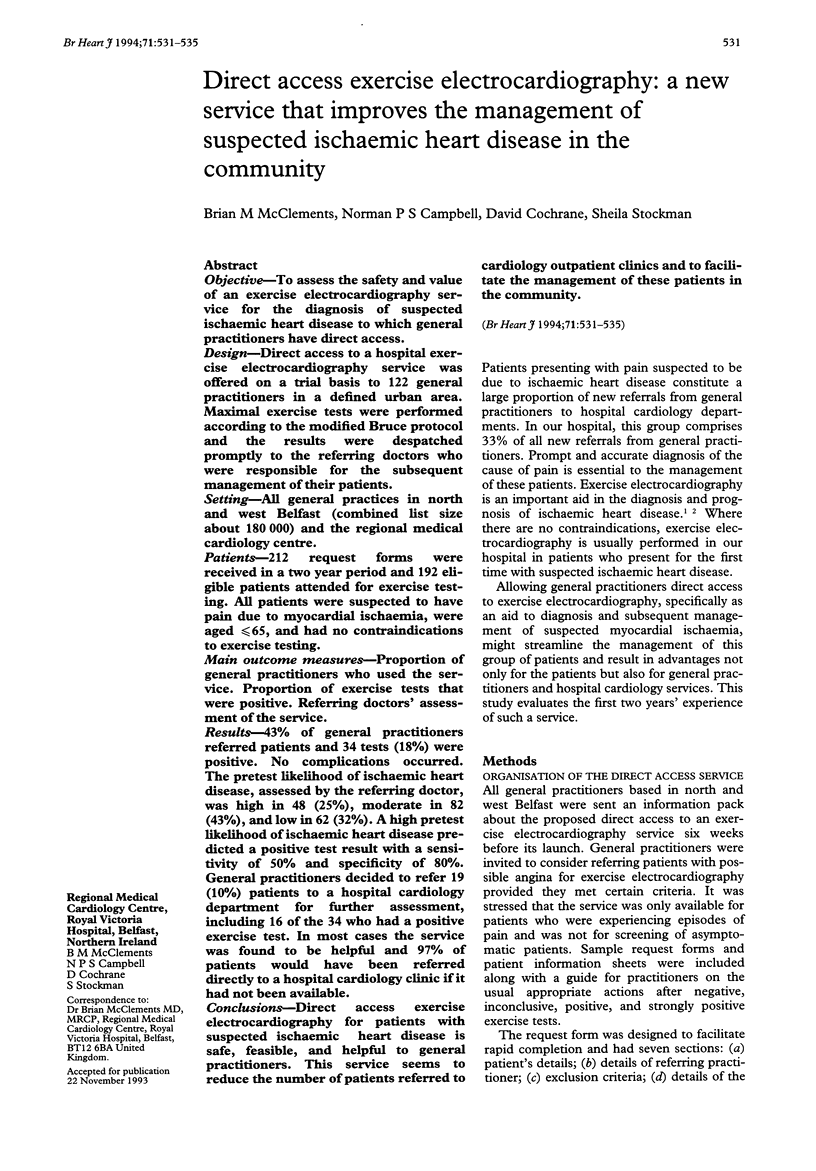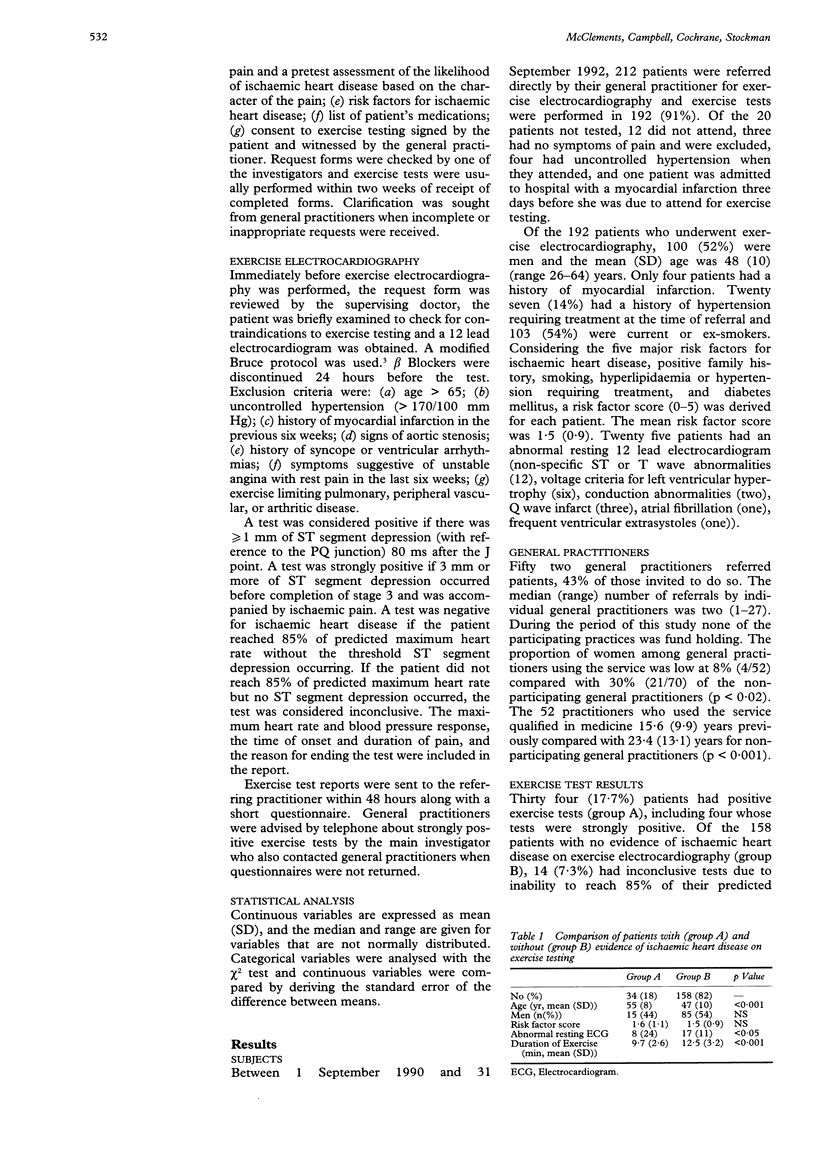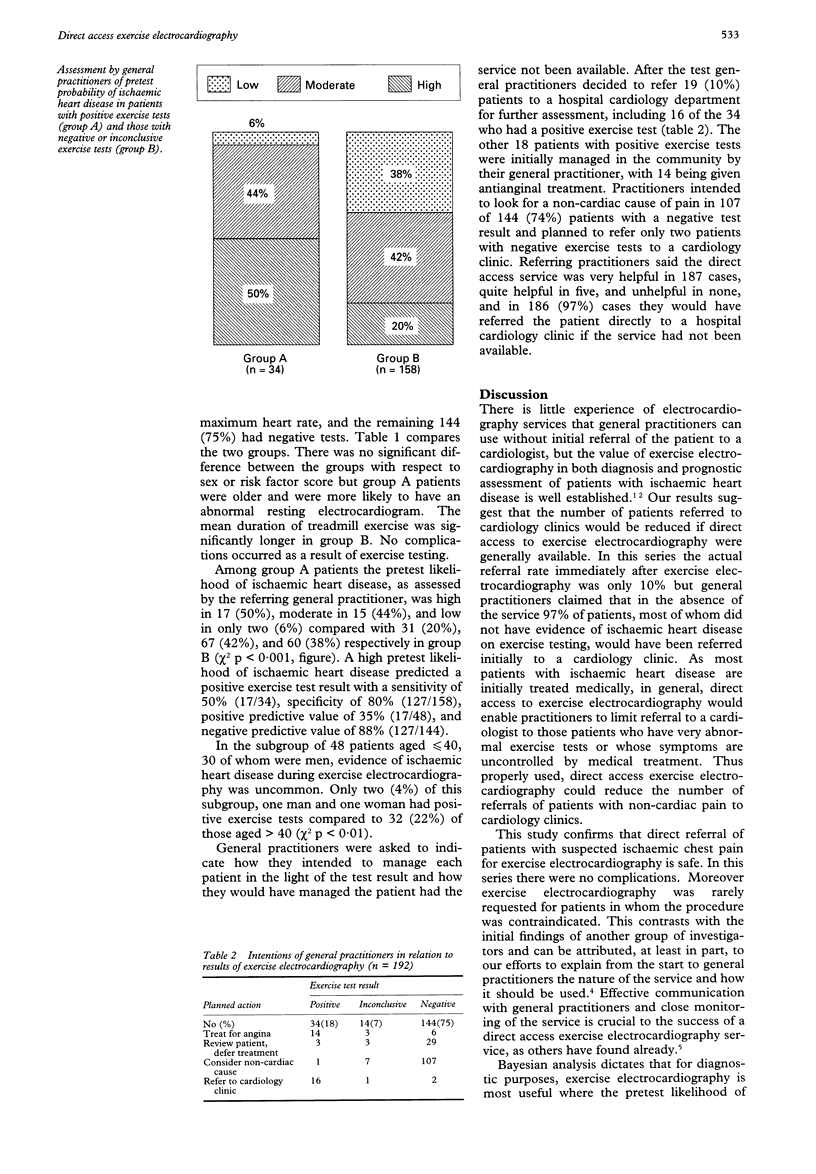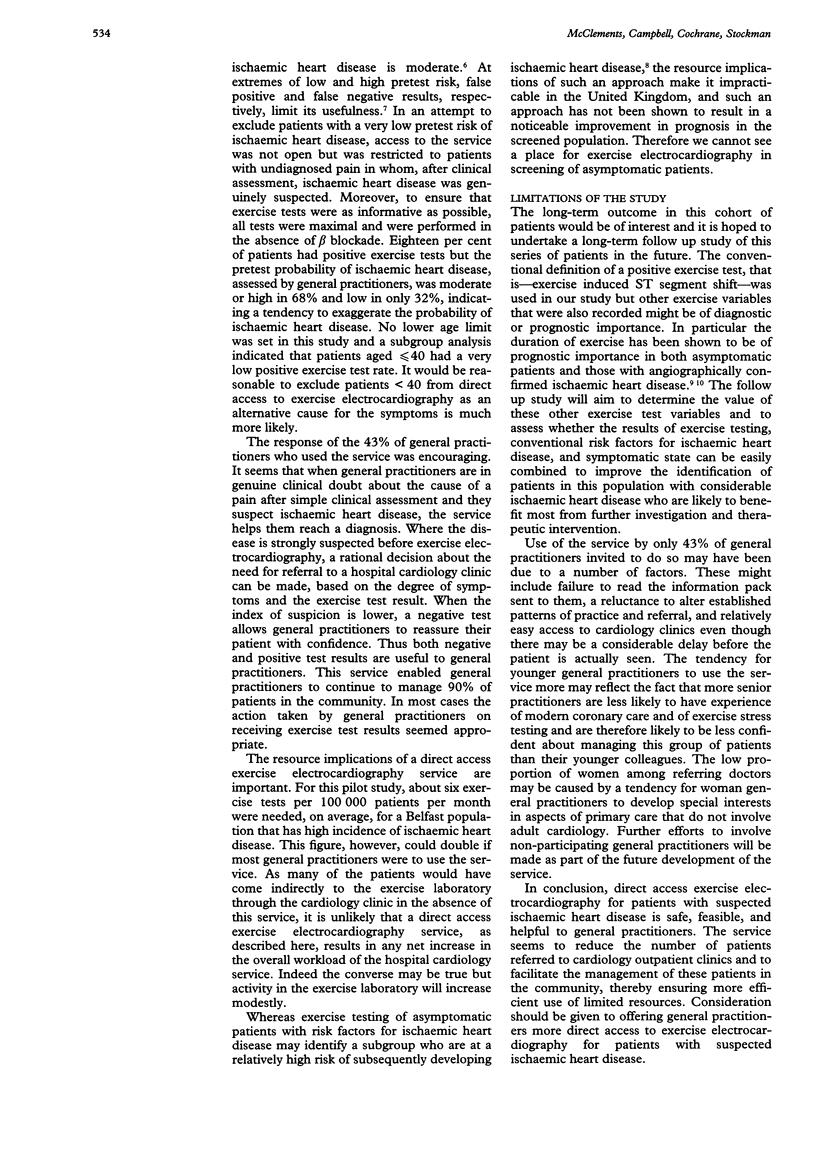Abstract
OBJECTIVE--To assess the safety and value of an exercise electrocardiography service for the diagnosis of suspected ischaemic heart disease to which general practitioners have direct access. DESIGN--Direct access to a hospital exercise electrocardiography service was offered on a trial basis to 122 general practitioners in a defined urban area. Maximal exercise tests were performed according to the modified Bruce protocol and the results were dispatched promptly to the referring doctors who were responsible for the subsequent management of their patients. SETTING--All general practices in north and west Belfast (combined list size about 180,000) and the regional medical cardiology centre. PATIENTS--212 request forms were received in a two year period and 192 eligible patients attended for exercise testing. All patients were suspected to have pain due to myocardial ischaemia, were aged < or = 65, and had no contraindications to exercise testing. MAIN OUTCOME MEASURES--Proportion of general practitioners who used the service. Proportion of exercise tests that were positive. Referring doctors' assessment of the service. RESULTS--43% of general practitioners referred patients and 34 tests (18%) were positive. No complications occurred. The pretest likelihood of ischaemic heart disease, assessed by the referring doctor, was high in 48 (25%), moderate in 82 (43%), and low in 62 (32%). A high pretest likelihood of ischaemic heart disease predicted a positive test result with a sensitivity of 50% and specificity of 80%. General practitioners decided to refer 19 (10%) patients to a hospital cardiology department for further assessment, including 16 of the 34 who had a positive exercise test. In most cases the service was found to be helpful and 97% of patients would have been referred directly to a hospital cardiology clinic if it had not been available. CONCLUSIONS--Direct access exercise electrocardiography for patients with suspected ischaemic heart disease is safe, feasible, and helpful to general practitioners. This service seems to reduce the number of patients referred to cardiology outpatient clinics and to facilitate the management of these patients in the community.
Full text
PDF




Selected References
These references are in PubMed. This may not be the complete list of references from this article.
- Allen W. H., Aronow W. S., Goodman P., Stinson P. Five-year follow-up of maximal treadmill stress test in asymptomatic men and women. Circulation. 1980 Sep;62(3):522–527. doi: 10.1161/01.cir.62.3.522. [DOI] [PubMed] [Google Scholar]
- Blomqvist C. G. Use of exercise testing for diagnostic and functional evaluation of patients with arteriosclerotic heart disease. Circulation. 1971 Dec;44(6):1120–1136. doi: 10.1161/01.cir.44.6.1120. [DOI] [PubMed] [Google Scholar]
- Bruce R. A., Hossack K. F., DeRouen T. A., Hofer V. Enhanced risk assessment for primary coronary heart disease events by maximal exercise testing: 10 years' experience of Seattle Heart Watch. J Am Coll Cardiol. 1983 Sep;2(3):565–573. doi: 10.1016/s0735-1097(83)80286-1. [DOI] [PubMed] [Google Scholar]
- Bruce R. A., McDonough J. R. Stress testing in screening for cardiovascular disease. Bull N Y Acad Med. 1969 Dec;45(12):1288–1305. [PMC free article] [PubMed] [Google Scholar]
- Ellestad M. H., Wan M. K. Predictive implications of stress testing. Follow-up of 2700 subjects after maximum treadmill stress testing. Circulation. 1975 Feb;51(2):363–369. doi: 10.1161/01.cir.51.2.363. [DOI] [PubMed] [Google Scholar]
- Paul V. E., Sulke A. N., Norris A. D. Open access exercise electrocardiography: does it improve the management of cardiovascular disease in the community? J R Soc Med. 1990 Mar;83(3):143–145. doi: 10.1177/014107689008300305. [DOI] [PMC free article] [PubMed] [Google Scholar]
- Rifkin R. D., Hood W. B., Jr Bayesian analysis of electrocardiographic exercise stress testing. N Engl J Med. 1977 Sep 29;297(13):681–686. doi: 10.1056/NEJM197709292971301. [DOI] [PubMed] [Google Scholar]
- Sulke A. N., Paul V. E., Taylor C. J., Roberts R. H., Norris A. D. Open access exercise electrocardiography: a service to improve management of ischaemic heart disease by general practitioners. J R Soc Med. 1991 Oct;84(10):590–594. doi: 10.1177/014107689108401007. [DOI] [PMC free article] [PubMed] [Google Scholar]
- Timmis A. D. Probability analysis in the diagnosis of coronary artery disease. Br Med J (Clin Res Ed) 1985 Nov 23;291(6507):1443–1444. doi: 10.1136/bmj.291.6507.1443. [DOI] [PMC free article] [PubMed] [Google Scholar]
- Weiner D. A., McCabe C. H., Ryan T. J. Prognostic assessment of patients with coronary artery disease by exercise testing. Am Heart J. 1983 May;105(5):749–755. doi: 10.1016/0002-8703(83)90236-3. [DOI] [PubMed] [Google Scholar]


